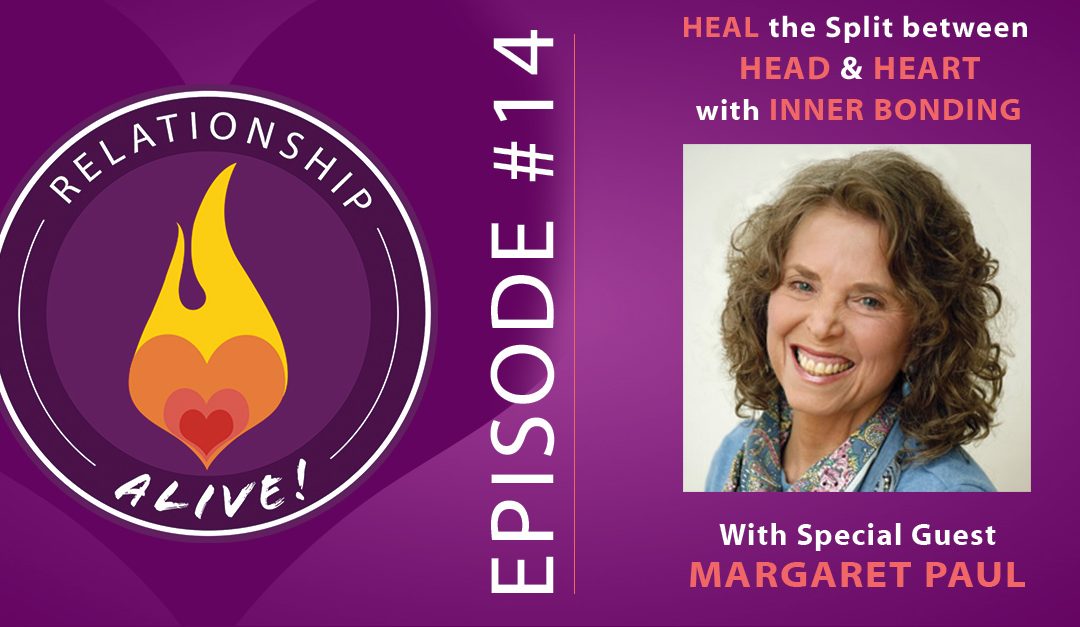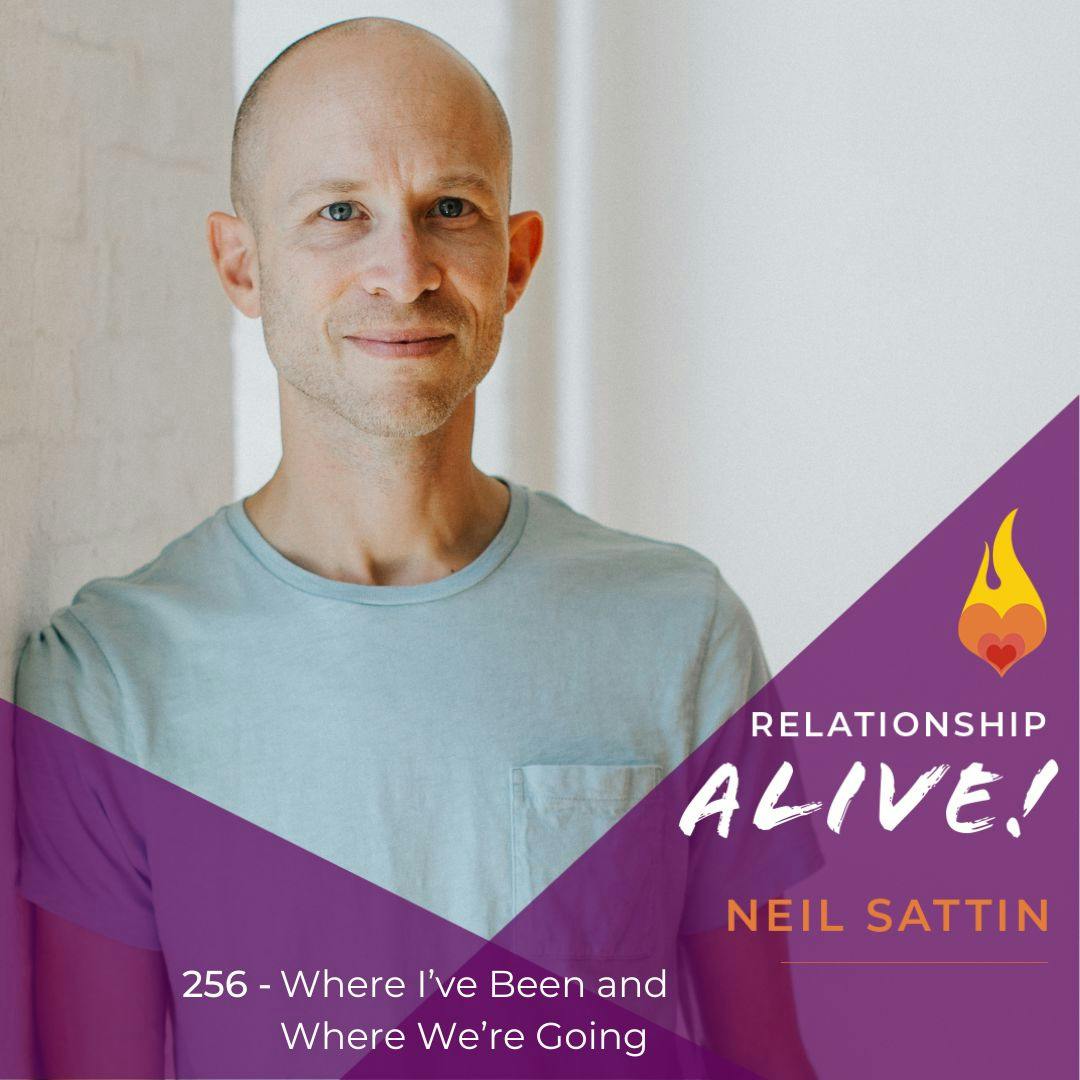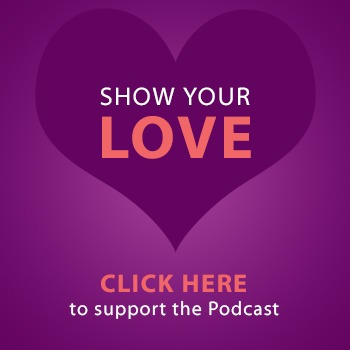You’ve heard it before - here, and elsewhere - in order to show up in relationship, you have to be able to show up for yourself. What does it mean to actually be able to show up for yourself? On top of that, have you ever experienced a split between your head and your heart - and do you know how to heal it? I’ve heard time and time again with friends and clients - “my heart wants one thing, my head wants another?” - but being able to feel like you’re fully in alignment is not only possible - it’s required for you to be able to be fully YOU in life.
Click here to receive the Show Guide for Margaret Paul
Today’s guest is Dr. Margaret Paul, psychologist and co-creator of Inner Bonding - and the author of the book “Inner Bonding”. As you’re about to find out, Inner Bonding is a straightforward practice - which we’re going to teach you how to do on this episode - that will help you heal the split between head and heart, and give you the presence that you need to show up fully in relationship - and in your life. It’s helpful for addiction and depression - as well as breaking patterns of co-dependence and jealousy in relationship.
Margaret and I discuss the following aspects of her work:
- Inner Bonding is a technique in which you learn to truly connect with your feelings, your wisdom/knowing, and your higher sense of guidance - and to connect them all with each other. Not only is it helpful to be able to tune into each aspect, but it is also impactful to bring them into alignment and support with each other. The process brings about a feeling of total internal alignment and integrity.
- Many people go into relationships to GET love instead of to SHARE love, and that is what makes all the difference in the world regarding relationships. Inner bonding will allow you to feel full from the inside out. Through practicing it, you can fully choose yourself - and then be able to share/create more love with your partner. If you’re seeking love from your partner, that is a recipe for eventual codependence.
- In Inner Bonding, the term “Inner Child” refers to your feelings and your innocence - the core of your essence. This part of you is connected deeply to your unique potential - what you have come into the world to express. If we numb our feelings through turning to some form of addictive behavior, then we miss the huge source of internal guidance. Even a “spiritual bypass” (going to a place of spiritual connectedness BEFORE getting in touch with your inner child) can be ultimately detrimental to your being fully YOU.
- Your “Inner Adult” is the part of you that is learning and growing each year of your life. This part of you is as “wise” as your years and experience. And, just as an adult is responsible for a child, that adult part of us is responsible for listening to and tending to the needs of the feeling/innocent/essence part of us.
- As you will see - Inner Bonding teaches you how to access your higher guidance for wisdom BEYOND your years. Your inner adult doesn’t have to do it all alone. Through inner bonding, you can learn how to contact the part of you that is in touch with the knowing outside of the limits of your experience.
- In Inner Bonding, there are only two intentions possible: the intention to protect against painful feelings through some sort of controlling behavior, and the intention to learn about loving ourselves. The latter intention occurs when we are in the loving adult stage and can connect with higher guidance, love, and wisdom. It is powerful in opening us up to a high-frequency energy level. Since most of us did not have good role models for loving ourselves, so we need higher guidance.
- Why are these two INTENTIONS important in the context of relationships? If you come into a relationship feeling unworthy, disconnected, and empty, then you expect the other person to “fill you up” and give you meaning and safety - to “protect” you from these uncomfortable feelings. Frequently we also attract common levels of woundedness in a partner. As we become emptier and emptier, we become resentful and controlling to feel love and avoid pain.
- The main cause of relationship problems is self-abandonment and the controlling behavior that results. This is where Inner Bonding comes in. Practicing the six steps will yield love, inner worth, shared love, growth, fun, companionship, and support. Aren’t those the things we all desire in a relationship?
- What if someone says, “I’m not feeling unworthy or unloved, but I just want more sex with my partner”? If someone wants sex because that is how they create feelings of worthiness and connection, then that’s a problem. If you want sex, and your partner isn’t in the mood, and you can respond without anger and neediness, then that’s a sign you’re coming from a place of love. If you become angry and controlling, or feel rejected, then that’s a clue that you might be seeking sexual intimacy for the wrong reasons.
- What problems might you see in relationships if you aren’t inner bonded? There might be anger, guilt trips, and a fear of rejection. Margaret shares a specific scenario in which one partner might become anxious, and the other might have the fear of engulfment and retreat more and withdraw. The separation will escalate. In a situation like this, what is the path back for this couple? Each partner needs to practice inner bonding to reconnect with themselves, so they aren’t angry, shutting down, or being resistant. Both partners should take responsibility for their beliefs and take loving action within. This remedy will translate into loving action with each other!
- What brings people closer together is when they are open to learning with each other and not to attack, blaming, and defending. When we are triggered into our fears and retreat into our “wounded self,” then we don’t even hear what the other person says. If you’re triggered and take a moment to practice Inner Bonding, you will be able to respond from a place of curiosity (the intent to learn) instead of your triggered place (the intent to protect).
- Many people can give compassion to others but not to themselves. They connect to all kinds of spiritual awareness but not to themselves, maybe even give and give and give without getting anything back. This will wear you out and deplete you. Inner Bonding teaches how to give yourself love and compassion. Again, to start from a place of being full, of fully choosing and accepting yourself, before you reflect that out into the world.
- There are two categories of negative feelings:
- Wounded feelings-we cause them through our own false beliefs, self-abandonment, and rejection of ourselves. We feel anxiety, depression, guilt, shame, emptiness, and aloneness.
- Painful feelings of life—These are feelings caused by deep grief, loneliness, heartbreak, and sorrow. We often learn as children to abandon these feelings, often turning to some kind of addictive behavior. Even “blame” is a form of addictive behavior - making other people responsible.
- The Six Steps to Inner Bonding:
- 1. Feel your feelings - become aware of what you’re feeling in your body. Do those sensations have a voice? What are they saying? In this step you are acknowledging the value of the feeling part of yourself, and the willingness to take responsibility for it.
- 2. Move into the Intent to Learn - This is when you move into being your inner adult, with a curiosity about your feelings. What are they telling you? How can you grow from this experience? How can you tend to this part of yourself as if it’s a needy child?
- 3. Dialogue with your inner child and your inner adult. It can be helpful to write this down - and even to write as your “adult” using your dominant hand, and to write as your “child” using your non-dominant hand. Have a dialogue with yourself as if you were talking to a child. What do you need? What do you want?
- 4. Dialogue with your Higher Guidance. As your inner adult, ask: What is the truth about this? What would be the loving action to take? Get quiet and wait for the answer.
- 5. TAKE the loving action. Develop a feeling of gratitude towards the guidance that got you there.
- 6. Check in with yourself. How’s your inner child doing? Are you experiencing inner alignment? Is there still some work to be done? You can repeat the steps of inner bonding until it feels “right”.
- How might one partner enlist the other in “getting on board” with Inner Bonding? The first step is always simply to do your own work. That in and of itself can be VERY powerful. Your partner may wake up to there being something different about you - and that would be a great time to tell them about your practice. When you’re doing the work, change is inevitable - and your ability to handle whatever change happens with compassion, love, and boundaries will also improve.
- When one’s feelings are hurt, how do you know when it’s time to separate and attend to the inner child in offering tenderness? Hurt feelings are one thing - and perhaps a good place to start with inner bonding by yourself. A hurt heart is something else. When your heart is hurt, then it’s time to speak up with your partner and see if they are open to learning, and then you can ask for support and caring from your partner.
- If both partners are “on board,” then how can you support each other? Say things like, “I’m here for you, I love you, and I want to help.” When the intention is loving, the words aren’t so important. It’s really all about the energy, and inner bonding helps you to trust the energy you pick up.
- What about a common feeling in relationships like jealousy? Jealousy is a wounded feeling that comes from telling ourselves lies and judgments. A jealous person has not learned to define their beautiful essence and doesn’t think they are “good enough.” Practicing inner bonding will lead to an ENORMOUS shift in those feelings. Both in the partner who is experiencing jealousy, as well as in the partner who might in fact be doing things that are out of integrity and contributing to their partner’s jealousy.
- What about the “really big feelings”? You can’t tackle these without a spiritual source of love. If there has been trauma in a relationship or a partner’s past, then we often need another person to help with those feelings. If you continue to abandon yourself, then you will re-traumatize yourself. It can also be helpful to get therapy specifc for the trauma while developing your loving adult self.
- How can you “show up” when a partner goes through a hard feeling? Hold them, reassure them that you are there for them and that they are not alone. Do inner bonding WHILE you’re doing that, so that you don’t go into your own triggered state!
Click here to receive the Show Guide for Margaret Paul
Resources:
Margaret Paul’s Website: http://www.innerbonding.com
Inner Bonding on Amazon
https://www.neilsattin.com/innerbonding is the direct link to this episode. Visit to download the show guide, or text “PASSION” to 33444 and follow the instructions to download the show guide. If you download the guide within the first week of this episode's airing, you are automatically qualified for a chance to win a copy of “Inner Bonding”!
Our Relationship Alive Community on Facebook
Amazing intro/outro music graciously provided courtesy of:



